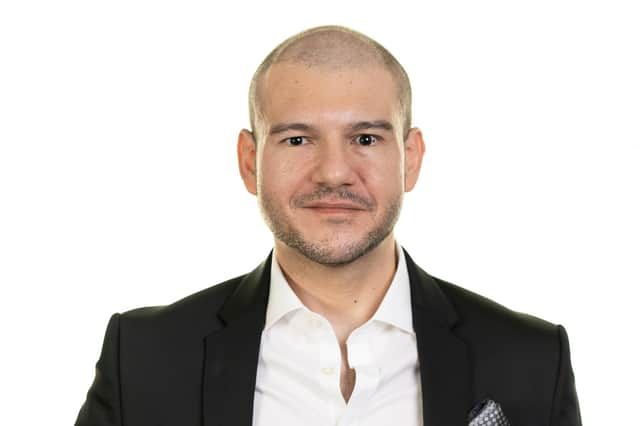Ground-breaking technology can complement physiotherapy to rehabilitate limb and muscular damage - Dr Nestor Demosthenous


Of course, more than 30 years on, manufacturers such as Cutera have launched platforms such as truBody Flex, which utilises EMS. But now in addition to being used for body sculpting and shaping, these devices and their ground-breaking technology can also be used therapeutically to complement physiotherapy to rehabilitate limb and muscular damage.
EMS is the evocation of muscle contraction using electric impulses. EMS provides an electrical current at a specifically designed frequency to target motor nerves causing them to fire. This stimulation creates muscle contractions that can be quick and frequent, fast with long pauses, or contractions that are held for several seconds or minutes at a time. Normally, electrical impulses from the brain travel through the central nervous system (CNS) and reach the neuromuscular junction where a neurotransmitter crosses the junction and stimulates muscle contraction.
Advertisement
Hide AdAdvertisement
Hide AdMuscle recognises a stimulus, regardless of the source and reacts to it. EMS allows for deep, intense, and complete muscular contractions without activating the CNS. It is the contraction type that determines whether the session will result in a warm up, increase in strength, muscle hypertrophy or even recovery. EMS works directly on the muscles and bypasses the body's own energy conservation system, which means that there's no limit to the percentage of muscle fibre that can be activated.
The impulses generated are delivered through electrodes (pads that adhere to the skin) over the middle of the muscles that require stimulating.
While this method successfully restores and improves muscle tone, another brilliant application of EMS is to combat muscle atrophy, which is basically a decrease in muscle mass that can happen due to injury or even ageing. A 2018 study by Volker Adams from The Heart Center in Dresden, Germany, found that EMS was becoming progressively more popular to increase muscle function and mass, especially when applied to healthy individuals after injury. In fact, studies in experimental models as well as in human subjects confirmed that EMS can increase muscle mass by around 1 per cent and improve muscle function by around 10 to 15 per cent after five to six weeks of treatment! TrusSculpt Flex has shown a final muscle mass increase of up to 30 per cent.
In a study by Kyoto university in 2011, the team assessed the effect of EMS on the prevention of muscle atrophy in patients during the early rehabilitation stage after anterior cruciate ligament (ACL) reconstruction. Twenty patients with acute ACL tears were divided into two groups randomly. The control group (CON group) participated in only the usual rehabilitation program. In addition to this protocol, the electrical muscle stimulation group (EMS group) received EMS training from the second post-operative day to four weeks after the surgery. Muscle thickness of vastus lateralis and calf increased significantly four weeks after surgery in the EMS group, while it decreased significantly in the CON group.
A few months ago, we offered truSculpt flex, a treatment that incorporates Multi-Directional Stimulation (MDS), which deploys a unique method of EMS, to one of our patients who suffered an accident that caused muscular atrophy in his calf. The treatment targeted specific muscle groups in the calf, using three treatment mode options, and the low levels of energy delivered promoted deep muscle contractions at high intensity. Post-treatment, he was astounded with the results, which, quite impressively, included a newfound ability to contract the muscle and an increase in muscle mass of the injured area.Most recently, Cutera have unveiled truSculpt flex+, an upgrade to the Flex system, which yields the same brilliant results but in a 15-minute no-downtime treatment. This treatment offers an unprecedentedly easy, safe and quick route to muscular rehab and will undoubtedly become a go-to treatment for those who wish to speed up their recovery and enhance the outcomes of their physiotherapy sessions.
Dr Nestor Demosthenous is an award-winning aesthetics doctor with a clinic in the heart of Edinburgh's New Town
Comments
Want to join the conversation? Please or to comment on this article.